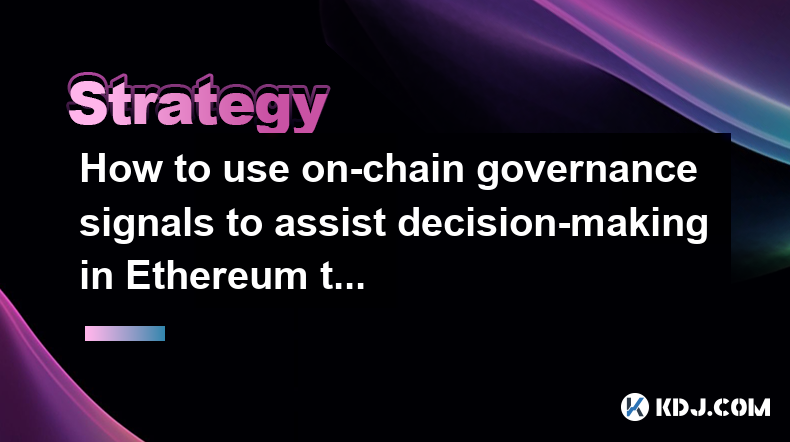-
 Bitcoin
Bitcoin $88,561.7557
-7.42% -
 Ethereum
Ethereum $2,386.1283
-11.59% -
 Tether USDt
Tether USDt $0.9995
-0.08% -
 XRP
XRP $2.1412
-13.49% -
 BNB
BNB $603.7490
-6.23% -
 Solana
Solana $134.0610
-15.40% -
 USDC
USDC $0.9998
-0.04% -
 Dogecoin
Dogecoin $0.2020
-12.37% -
 Cardano
Cardano $0.6489
-11.92% -
 TRON
TRON $0.2278
-7.40% -
 Chainlink
Chainlink $14.5401
-13.21% -
 Avalanche
Avalanche $20.8088
-12.79% -
 Stellar
Stellar $0.2797
-12.10% -
 Toncoin
Toncoin $3.3738
-9.58% -
 Litecoin
Litecoin $111.1339
-9.93% -
 Sui
Sui $2.6927
-17.52% -
 UNUS SED LEO
UNUS SED LEO $8.9090
-8.64% -
 Shiba Inu
Shiba Inu $0.0...01339
-9.54% -
 Hedera
Hedera $0.1814
-10.64% -
 MANTRA
MANTRA $7.7583
-8.28% -
 Polkadot
Polkadot $4.2594
-10.38% -
 Hyperliquid
Hyperliquid $18.2177
-14.17% -
 Ethena USDe
Ethena USDe $0.9998
-0.03% -
 Bitcoin Cash
Bitcoin Cash $281.6140
-10.76% -
 Dai
Dai $0.9997
-0.02% -
 Bitget Token
Bitget Token $4.3526
-12.02% -
 Uniswap
Uniswap $7.7183
-10.33% -
 Monero
Monero $217.7978
-6.97% -
 NEAR Protocol
NEAR Protocol $2.8702
-13.53% -
 Pepe
Pepe $0.0...07612
-14.85%
How to invest in Bitcoin mining farm
Understanding Bitcoin mining's technicalities, evaluating hardware options, setting up infrastructure, managing power consumption, and monitoring operations are crucial for investing in a Bitcoin mining farm.
Jan 09, 2025 at 03:48 am

Key Points:
- Understanding Bitcoin Mining
- Evaluating Hardware Options
- Setting Up Mining Infrastructure
- Managing Power Consumption
- Monitoring and Optimizing Operations
How to Invest in Bitcoin Mining Farm
1. Understanding Bitcoin Mining
Bitcoin mining involves using specialized computing hardware to solve complex mathematical equations and verify Bitcoin transactions. The process requires significant computational power and electricity consumption. In return, successful miners are rewarded with newly created Bitcoins and transaction fees.
Understanding the technical aspects of Bitcoin mining is crucial before investing in a mining farm. This includes knowledge of blockchain technology, mining algorithms, and the different types of mining hardware.
2. Evaluating Hardware Options
The choice of mining hardware is a critical decision. Different types of hardware offer various hash rates, power consumption, and profitability. When evaluating hardware options, consider the following:
- ASIC Miners: Specialized mining devices designed for optimal hash rates and power efficiency but limited versatility.
- GPU Miners: Graphics cards used for mining that can be reconfigured for other uses.
- CPU Miners: General-purpose processors used for mining but offer lower hash rates and profitability.
Research thoroughly the available options, compare specifications, and consider the current market prices and potential profitability when selecting hardware.
3. Setting Up Mining Infrastructure
Establishing a mining infrastructure involves creating a physical environment that supports the efficient operation of mining hardware. This includes:
- Ventilation: Ensuring adequate air circulation to dissipate heat and prevent hardware damage.
- Power Supply: Providing a reliable and stable power supply to the mining equipment.
- Security: Implementing measures to protect equipment from physical and virtual threats.
- Network Connectivity: Securing a fast and stable internet connection for communication between mining devices and the Bitcoin network.
Proper infrastructure setup is essential for the long-term operation and profitability of a mining farm.
4. Managing Power Consumption
Power consumption is a major expense in Bitcoin mining. Optimizing energy use can significantly impact profitability:
- Selecting Energy-Efficient Hardware: Invest in mining equipment known for low power consumption per hash rate.
- Monitoring Power Consumption: Regularly track the energy consumption of mining devices to identify potential areas for improvement.
- Negotiating Electricity Rates: Explore options for preferential electricity rates or renewable energy sources to reduce operating costs.
Effective power management strategies can enhance the profitability of a mining farm.
5. Monitoring and Optimizing Operations
To maximize profitability, ongoing monitoring and optimization of mining operations are crucial:
- Hardware Performance Monitoring: Track the hash rate, temperature, and power consumption of mining devices to identify any issues.
- Temperature Monitoring: Ensure the ambient temperature remains within acceptable limits to prevent overheating and equipment damage.
- Software Optimization: Regularly update mining software to improve efficiency and reduce energy consumption.
- Benchmarking: Compare the performance of mining hardware against industry benchmarks to ensure optimal performance.
Continuous monitoring and optimization efforts can enhance profitability and extend the lifespan of mining equipment.
FAQs:
Q: Is Bitcoin mining profitable?
A: The profitability of Bitcoin mining depends on factors such as the price of Bitcoin, hardware efficiency, energy costs, and competition. While it can be profitable during bull markets, it's essential to thoroughly research and consider the risks before investing.
Q: What are the risks of Bitcoin mining?
A: Risks include hardware failure, fluctuations in Bitcoin price, increasing competition, and regulatory uncertainties. It's crucial to plan accordingly and invest only what you can afford to lose.
Q: What is the future of Bitcoin mining?
A: The long-term future of Bitcoin mining is subject to debate. However, the increasing adoption and popularity of Bitcoin suggest that mining will continue to play a significant role in securing the network. Technological advancements may also lead to more efficient and cost-effective mining methods.
Disclaimer:info@kdj.com
The information provided is not trading advice. kdj.com does not assume any responsibility for any investments made based on the information provided in this article. Cryptocurrencies are highly volatile and it is highly recommended that you invest with caution after thorough research!
If you believe that the content used on this website infringes your copyright, please contact us immediately (info@kdj.com) and we will delete it promptly.
- The Race Is On—Which Crypto Will Lead?
- 2025-02-25 17:10:29
- Trump Tariffs Rattle Risk Sentiment
- 2025-02-25 17:10:29
- Remittix (RTX) – The New “XRP 2.0” is Causing a Stir of Enthusiasm in the Crypto Space
- 2025-02-25 17:10:29
- Ethereum Price to End February on The Worst Note?
- 2025-02-25 17:10:29
- Grayscale ADA ETF Filing Acknowledged by SEC
- 2025-02-25 17:10:29
- Bitcoin (BTC) Hashrate Plummets, Miners No Longer Optimistic About the Asset's Outcome
- 2025-02-25 17:10:29
Related knowledge

How to buy and sell cryptocurrencies through P2P platforms?
Feb 25,2025 at 05:27pm
1. Choose the right P2P platform Security: Check whether the platform has complete security measures, such as multiple encryption, cold wallet storage, etc., to ensure the security of funds and personal information.Transaction fees: Understand the proportion of handling fees charged by the platform. The fees charged by different platforms are different,...

What are the fees for buying and selling cryptocurrencies?
Feb 25,2025 at 05:18pm
Transaction feePlatform charging method: Most cryptocurrency trading platforms charge handling fees at a certain proportion of the transaction amount. For example, some platforms charge 0.1% to 0.5% per transaction. If you trade cryptocurrency of 10,000 yuan, you will be charged at 0.2%, and the handling fee will be 20 yuan.Influencing factors: transact...

When is the best time to buy and sell cryptocurrencies?
Feb 25,2025 at 04:50pm
Analyze market trendsMarket trends are the key to judging the timing of buying and selling. In an upward trend, prices continue to hit highs and lows gradually rise. You can buy when you pull back to support; on the contrary, the price continues to fall, the highs gradually decrease, and you can sell when you rebound to resistance. We must continue to p...

How to utilize long-short hedging strategies in Ethereum trading?
Feb 25,2025 at 09:07am
Key Points:Understand the concept of long-short hedgingChoose appropriate assets for long and short positionsManage risk and leverageMonitor positions and adjust as neededExplore advanced strategiesHow to Utilize Long-Short Hedging Strategies in Ethereum Trading:1. Comprehend Long-Short HedgingLong-short hedging involves simultaneously holding opposite ...

How to identify and utilize market reversal signals in Ethereum trading?
Feb 25,2025 at 04:12pm
Key Points:Understand market reversal patternsUtilize technical analysis indicatorsConsider market sentiment and news eventsApply risk management strategiesIdentifying Market Reversal SignalsDouble Top and Bottom:Double top or bottom formations identify potential price reversals.A double top occurs when the price forms two peaks, followed by a dip below...

How to use on-chain governance signals to assist decision-making in Ethereum transactions?
Feb 25,2025 at 07:06am
Key PointsOn-chain governance signals allow individuals to participate and influence the decision-making process of Ethereum-related projects and protocols.These signals help users make more informed decisions, especially when performing complex transactions involving Ethereum or dealing with advanced protocols like decentralized exchanges.Monitoring on...

How to buy and sell cryptocurrencies through P2P platforms?
Feb 25,2025 at 05:27pm
1. Choose the right P2P platform Security: Check whether the platform has complete security measures, such as multiple encryption, cold wallet storage, etc., to ensure the security of funds and personal information.Transaction fees: Understand the proportion of handling fees charged by the platform. The fees charged by different platforms are different,...

What are the fees for buying and selling cryptocurrencies?
Feb 25,2025 at 05:18pm
Transaction feePlatform charging method: Most cryptocurrency trading platforms charge handling fees at a certain proportion of the transaction amount. For example, some platforms charge 0.1% to 0.5% per transaction. If you trade cryptocurrency of 10,000 yuan, you will be charged at 0.2%, and the handling fee will be 20 yuan.Influencing factors: transact...

When is the best time to buy and sell cryptocurrencies?
Feb 25,2025 at 04:50pm
Analyze market trendsMarket trends are the key to judging the timing of buying and selling. In an upward trend, prices continue to hit highs and lows gradually rise. You can buy when you pull back to support; on the contrary, the price continues to fall, the highs gradually decrease, and you can sell when you rebound to resistance. We must continue to p...

How to utilize long-short hedging strategies in Ethereum trading?
Feb 25,2025 at 09:07am
Key Points:Understand the concept of long-short hedgingChoose appropriate assets for long and short positionsManage risk and leverageMonitor positions and adjust as neededExplore advanced strategiesHow to Utilize Long-Short Hedging Strategies in Ethereum Trading:1. Comprehend Long-Short HedgingLong-short hedging involves simultaneously holding opposite ...

How to identify and utilize market reversal signals in Ethereum trading?
Feb 25,2025 at 04:12pm
Key Points:Understand market reversal patternsUtilize technical analysis indicatorsConsider market sentiment and news eventsApply risk management strategiesIdentifying Market Reversal SignalsDouble Top and Bottom:Double top or bottom formations identify potential price reversals.A double top occurs when the price forms two peaks, followed by a dip below...

How to use on-chain governance signals to assist decision-making in Ethereum transactions?
Feb 25,2025 at 07:06am
Key PointsOn-chain governance signals allow individuals to participate and influence the decision-making process of Ethereum-related projects and protocols.These signals help users make more informed decisions, especially when performing complex transactions involving Ethereum or dealing with advanced protocols like decentralized exchanges.Monitoring on...
See all articles

















































































